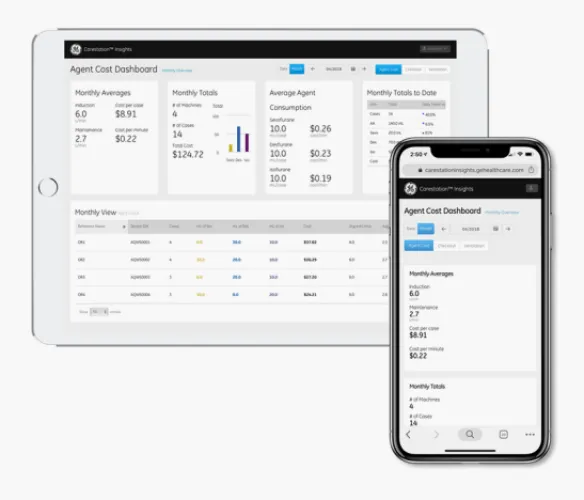Impacting your perioperative resource usage
We discuss the economic impacts of perioperative resource utilization and how implementing perioperative care pathways can reduce hospital stays, lower costs, and improve patient outcomes.
Show Notes
Transcript
Speakers
Perioperative resource utilization can have a positive impact on healthcare economics. In this podcast, Dr. Robert Bilkovski, MD, MBA explores Perioperative Surgical Homes, and how the use of preoperative assessment clinics and AI technology may play a significant role in the future of the perioperative care pathway.
Key insights
- The US spends $180 billion per year on inpatient surgical procedures in non-federal hospitals.
- There is a shift in healthcare reimbursement from fee-for-service to value-based purchasing.
- Complications associated with surgery increase hospital length of stay, post-operative ICU utilization, complication rates and cost of care.
- Preoperative assessment clinics can reduce same-day cancellations and shorten ICU and hospital stays.
- AI technology may be used in the future to predict events, monitor patients and optimize surgery timing.
- Anesthesiologists are in high demand, so they must continually drive value in the hospital system.
- Implementing process improvement practices in the perioperative space is necessary.
Welcome back, this is Dr. Robert Bilkovski as we continue in this podcast series on Perioperative Safety as we look into the economic impacts of perioperative resource utilization. Clearly Perioperative safety is always a critical topic and one where we continuously seek improvement. The topic is even more timely give the current resource constraints we face as a community. This podcast builds off of the perioperative surgical home concept that was introduced in the first podcast in this series. As a refresher, the perioperative surgical home (or PSH for short) serves as a patient-centric, team-based model of care to help meet the demands of a rapidly approaching health-care paradigm emphasizing value, patient satisfaction, and a reduction in costs. The goals of the PSH are to improve patient satisfaction, improve the quality of perioperative care delivered, and reduce the cost of surgical care.
In the United States, about $180 billion per year is spent on inpatient surgical procedures in non-federal hospitals alone. Compounding this issue, the average cost of surgery continues to climb—from $13,000 per hospitalization in 2000 to $18,000 (inflation adjusted) in 2010. More importantly, patient safety, outcomes, and readmissions remain ongoing concerns.[1]
There is a shift in the US from a fee-for-service model of health care reimbursement toward value-based purchasing. Cost containment through improved patient outcomes and reduction in complications can support this transition. Complications associated with surgery according to one source, result in a $19000 (or 119%) increase in hospital costs compared to when no complications occur.[2]
Furthermore, these increased costs result in a 5.8% reduced profit margin, on average, for the hospital.
A white paper published in the United Kingdom in 2020 by the Center for Perioperative Care provided an excellent overview on the scope of care pathways that have been deployed, combined with the economic effects of such implementations.[3] At a high level there is evidence from UK and international studies that show perioperative care pathways can help to reduce the following:
- hospital length of stay following surgery
- post-operative ICU utilization
- reduced complication rates, which result in lower resource utilization
- reduce the cost of care
- Amongst 18 randomized trials involving gastric cancer surgery, the average reduction in hospital length of stay was 1.8 days, hospital costs were lowered on average of $650 and pulmonary infections fell by nearly 50% compared to historic controls. But one caveat of negative note was that readmission rates increased, with a risk ratio of 2.4
In general, these care pathways have been shown to lower the hospital length of stay on average between 1-2 days, without any impact to complications, unplanned readmission or extra burden placed on the primary care or social service providers.
Several examples in this white paper are noteworthy to highlight, that reflect the impact of perioperative care pathways in a variety of surgical cases:
- In a systematic review involving abdominal or pelvic surgery, the impact of perioperative care pathways reduced hospital stays by 0.8 days, post-operative lung infection risk reduced by over 50% and a modest reduction in surgical site infections was observed.
- Other systematic reviews in GI surgery and gynecology surgery showed a reduction in hospital length of stay of 2 days and 3 days, respectively. Lastly, in systematic review of GI surgery, the economic impacts were calculated and a $982 savings in the cost of surgery was projected (using 2018 prices).
Central to the effective implementation of perioperative care pathways is risk assessment of the surgical patient. One option that was proposed is the use of preoperative assessment clinics that differ from the customary assessment which is conducted the day of surgery. This white paper noted that studies have found that in the UK, their use can reduce the frequency of last-minute cancellations. Similarly in the UK a separate study looked at the utility of a multidisciplinary preoperative assessment clinic for hip or knee replacements compared to convention assessments. In so doing there was a reduction in the frequency of PACU admissions, 10% versus 22% in the control population along with a shorter ICU and hospital lengths of stay. In total, the impact of these interventions resulted in an estimated cost savings of 50,000 pound (in 2011 prices)
Globally, there were similar improvements noted, where a US study that added a structured medical preoperative evaluation to standard anesthesia preoperative assessment showed a trend to reduced same-day cancellations and a statistically significant reduction in inpatient mortality.
The future of the perioperative care pathway is likely to involve a great reliance on AI technology. Today, AI in the healthcare setting is mostly deployed in the field of radiology as part of image analysis, while it appears eventual that AI will apply to anesthesia practice. For instance, support in terms of adverse event prediction, patient monitoring and drug delivery with implementation of virtual assistants may be the future. The amalgamation of short-term and long-term monitoring information can be utilized in the future to decipher truly significant clinical factors and in addition, determine the optimal timing for surgery.
The market forces as they apply to anesthesiology are complicated. One the one end, anesthesiologists are highly trained professionals, but on the other hand exists forces, often coming from the hospital to lower costs and often manifest as increased utilization of non-anesthesiologists performing anesthesia-related skills.[4] More importantly, the current demand for anesthesia services outstrips the supply so the ability for anesthesiologists their ability to continually drive increased value creating to the hospital system will be of paramount importance. Leaning into the perioperative surgical home model can help bolster their value within the hospital as they tack on broader roles throughout the journey of a surgical patient.
At this point we will conclude this topic and please be on the lookout for additional content that discusses more details on means of implementing process improvement practices within the perioperative space. Thank you again for listening.
References
[1] Kash BA, Zhang Y, Cline KM, Menser T, Miller TR. The perioperative surgical home (PSH): a comprehensive review of US and non-US studies shows predominantly positive quality and cost outcomes. Milbank Q. 2014 Dec;92(4):796-821. doi: 10.1111/1468-0009.12093. PMID: 25492605; PMCID: PMC4266177
[2] Healy MA, Mullard AJ, Campbell DA Jr, Dimick JB. Hospital and Payer Costs Associated With Surgical Complications. JAMA Surg. 2016 Sep 1;151(9):823-30. doi: 10.1001/jamasurg.2016.0773. PMID: 27168356.
[3] https://cpoc.org.uk/sites/cpoc/files/documents/2020-09/Impact of perioperative care - rapid review FINAL - 09092020MW.pdf
[4] Laudanski, K., 2022. Quo Vadis Anesthesiologist? The Value Proposition of Future Anesthesiologists Lies in Preserving or Restoring Presurgical Health after Surgical Insult. Journal of Clinical Medicine, 11(4), p.1135. https://www.mdpi.com/2077-0383/11/4/1135/htm

Dr. Robert N. Bilkovski, MD, MBA
President, RNB Ventures Consulting Inc.
Dr. Bilkovski has broad management experience, having served in leadership roles in multiple Fortune 500 companies overseeing medical affairs and clinical development in IVD, medical device, and pharmaceuticals industries. Some of the companies where he served in leadership roles include Hospira, GE HealthCare, Abbott Laboratories, and Becton Dickinson. Robert currently is the President of RNB Ventures Consulting Inc. providing strategic consulting in the field of medical and clinical affairs for medical device and diagnostic companies.
Dr. Bilkovski received his undergraduate degree in biochemistry with a focus in genetic engineering at McMaster University in Hamilton, Ontario, Canada. Robert completed his medical training at Rosalind Franklin University/The Chicago Medical School and subsequently pursued specialization in emergency medicine. Lastly, Dr. Bilkovski earned his MBA at the University of Notre Dame as part of his transition from clinical medicine to medical industry.












